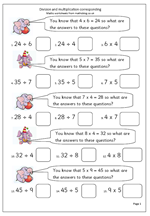 Investigations are a great way to develop logical thinking and improve systematic lines of enquiry.
Investigations are a great way to develop logical thinking and improve systematic lines of enquiry.
This is a fun investigation for children from Year 3 upwards (7+ yrs). The task is:
Put in the numbers 0, 1, 2, 3 and 4 in the squares on the grid so that the total across is the same as the total going down.
Children will probably start this mini investigation with a lot of ‘trial and improvement’ and then come up with some correct solutions.
There are several key aspects to the logical thinking behind this, including:
1. Add up the total of 0, 1, 2, 3 and 4. It comes to 10.
2. This means that if the total across and the total down are equal and the corner number is zero, they must both add up to 5.
3. By working methodically with zero in the corner 8 arrangements can be found.
There is also a print-out of large numbers which can be cut out to help children move the numbers about without having to write down everything they do.








